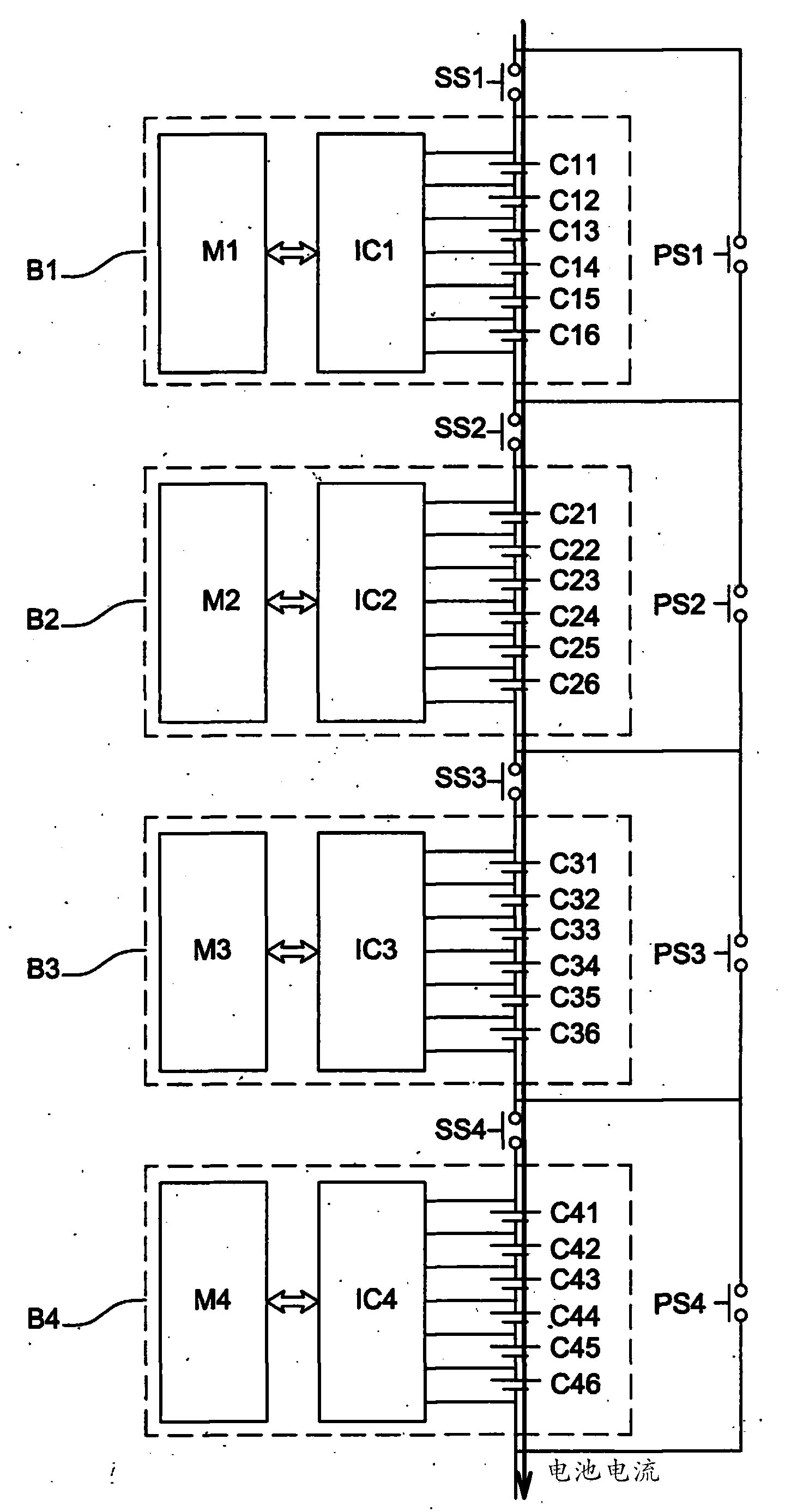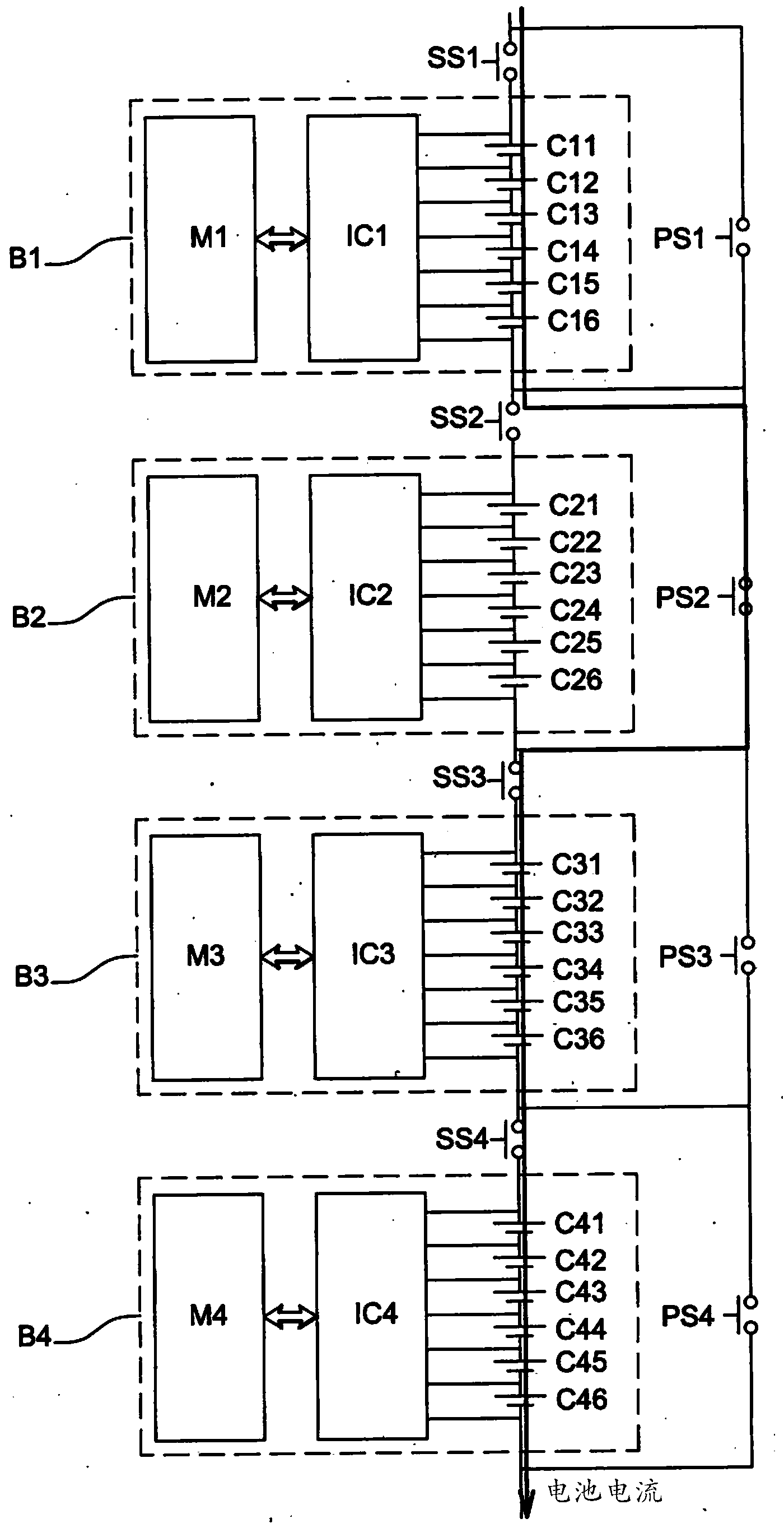Method for balancing the charge and discharge level of a battery by switching its blocks of cells
A battery unit, charging current technology, applied in the direction of secondary battery charging/discharging, battery/fuel cell control devices, battery pack components, etc. The effect of efficiency
- Summary
- Abstract
- Description
- Claims
- Application Information
AI Technical Summary
Problems solved by technology
Method used
Image
Examples
Embodiment Construction
[0028] figure 1 An example of a battery pack for an electric or hybrid vehicle according to the present invention is shown in a schematic diagram. The illustrated battery pack includes N blocks Bi, where 1≤i≤N-1, and in the illustrated example N>6, at figure 1Only four chunks labeled B1, B2, B3 and B4 are shown in . These blocks B1, B2, B3, and B4 each include six Li-ion battery cells connected in series, labeled C11, C12, C13, C14, C15, and C16 in block B1, and C21, C16 in block B2. C22, C23, C24, C25, and C26, labeled C31, C32, C33, C34, C35, and C36 in block B3, and labeled C41, C42, C43, C44, C45, and C46 in block B4. Furthermore, each of these blocks B1, B2, B3 and B4 includes an integrated circuit for measuring the voltage across the terminals of each battery cell inside the block, these circuits being labeled IC1, IC2, IC3 and IC4 respectively. Each of these circuits IC1, IC2, IC3 and IC4 is capable of measuring between 6 and 16 battery cell voltages in this non-limi...
PUM
 Login to View More
Login to View More Abstract
Description
Claims
Application Information
 Login to View More
Login to View More - R&D
- Intellectual Property
- Life Sciences
- Materials
- Tech Scout
- Unparalleled Data Quality
- Higher Quality Content
- 60% Fewer Hallucinations
Browse by: Latest US Patents, China's latest patents, Technical Efficacy Thesaurus, Application Domain, Technology Topic, Popular Technical Reports.
© 2025 PatSnap. All rights reserved.Legal|Privacy policy|Modern Slavery Act Transparency Statement|Sitemap|About US| Contact US: help@patsnap.com



